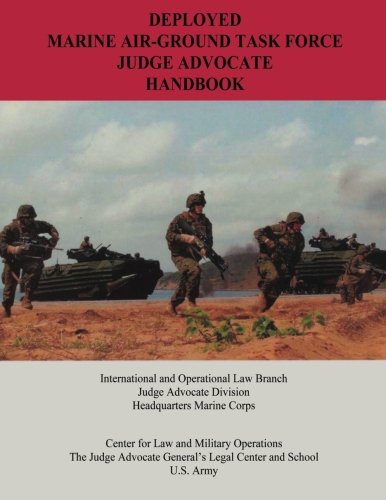
Since World War II, in nearly every crisis, the United States Marine Corps has projected forces to the crisis area with the ability to move ashore, backed with sufficient sustainability for prolonged operations. These forces have been organized into Marine Air Ground Task Forces (MAGTF), a combination that includes air, ground, and logistic assets, that maximizes the combat power of each of the war fighting elements. This capability is unique among all the military services and provides combatant commanders with scalable, versatile, and agile expeditionary forces. The largest standing MAGTF is the Marine Expeditionary Force (MEF), which is comprised of a headquarters element, possibly multiple divisions (ground combat element), wings (aviation combat element), and logistic groups (combat service support element). The intermediate-sized MAGTF is the Marine Expeditionary Brigade (MEB), which is normally composed of a headquarters element, a reinforced infantry regiment, a composite air group, and a brigade service support element. The smallest standing MAGTF is the Marine Expeditionary Unit (MEU), which is composed of a headquarters element, a reinforced infantry battalion, a composite air squadron, and a MEU service support group. In addition to the MEF, MEB, and MEU, a MAGTF can be task organized into essentially any size for a specific mission, operation, or exercise. Such a MAGTF is referred to as a Special Purpose MAGTF (SPMAGTF).MAGTFs have long provided the United States with a broad spectrum of response options when U.S. and allied interests have been threatened, or in non-combat situations requiring instant responses to a crisis. Selective, timely, and credible commitments of MAGTF units have, on many occasions, helped bring stability to a region and sent signals worldwide to aggressors that the United States is willing to defend its interests and able to do so on extremely short notice with a significantly powerful force. With these unique MAGTF capabilities come unique challenges. Three of these challenges are recurrent themes of this book: tempo, transience, and isolation. First, MAGTF operations are characterized by speed. Things move fast in the MAGTF world, from the ability to deploy at a moment's notice to the ability to execute missions within hours of receipt of a warning or execute order. As a result, MAGTF commanders and staff planners, including the judge advocate (JA), must be able to act quickly and decisively with little time for contemplation and debate. .
Read Deployed Marine Air-Ground Task Force Judge Advocate Handbook complete books online for free. Reading Deployed Marine Air-Ground Task Force Judge Advocate Handbook full free books online without downloading.
Looking up to the full article E-Books free download? Here you can read.
